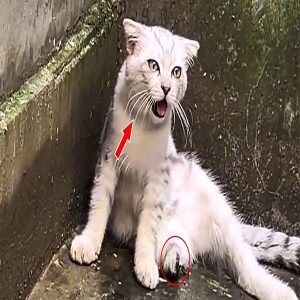
When it comes to raising giant pandas, there’s a lot more than meets the eye. Pandas are undeniably adorable, but caring for them is a complex and delicate task that requires significant effort, expertise, and resources. In this blog post, we’ll explore the intricacies of raising pandas, the challenges faced by conservationists, and the incredible efforts made to ensure the survival of this beloved species.
The Adorable Giant Panda
The giant panda, known for its distinctive black and white coat and playful demeanor, has captured the hearts of people around the world. Native to the mountainous regions of central China, these gentle giants primarily inhabit bamboo forests. Despite their size, pandas are incredibly gentle and are often seen engaging in playful activities, which has contributed to their popularity in zoos and wildlife parks globally.
The Challenge of Pandas in Captivity
While pandas may seem like perfect candidates for captivity due to their charm, raising them is far from straightforward. Here are some key challenges faced by those who care for pandas in captivity:
Dietary Needs
One of the primary challenges in raising pandas is meeting their dietary requirements. Pandas are bamboo specialists, and their diet consists almost entirely of various bamboo species. A single panda can consume up to 40 pounds of bamboo daily. This means that facilities housing pandas must have a constant and reliable supply of fresh bamboo, which can be logistically challenging and costly.

Reproduction Difficulties
Breeding pandas in captivity is notoriously difficult. Female pandas are fertile for only a few days each year, and even during this brief window, successful mating does not always occur. Additionally, panda cubs are extremely vulnerable at birth, weighing only about 100 grams, which is roughly the size of a cup of tea. Ensuring their survival requires round-the-clock care and monitoring by dedicated staff.
Health and Disease Management
Pandas are susceptible to various diseases and health issues, many of which are not fully understood. Veterinary care for pandas is a specialized field that requires extensive knowledge and experience. Regular health check-ups, vaccinations, and a carefully monitored diet are essential to keep pandas healthy. Moreover, pandas can suffer from diseases that affect their wild populations, and understanding these diseases is critical for conservation efforts.
Conservation Efforts and Successes
Despite these challenges, significant strides have been made in panda conservation over the past few decades. Conservationists and researchers have implemented various strategies to protect and increase the panda population both in captivity and in the wild.
Habitat Protection
One of the most effective ways to conserve pandas is by protecting their natural habitat. In China, large areas of bamboo forests have been designated as protected reserves, providing a safe and sustainable environment for wild pandas. These protected areas are crucial for the survival of wild panda populations and help maintain the biodiversity of these regions.
Captive Breeding Programs
Captive breeding programs have played a vital role in increasing the panda population. These programs are meticulously planned and executed, with the aim of breeding pandas in captivity and eventually releasing them into the wild. Breeding centers, such as the Chengdu Research Base of Giant Panda Breeding in China, have seen considerable success in recent years, contributing to a steady increase in panda numbers.

International Collaboration
Panda conservation is a global effort, with various countries and organizations working together to protect this iconic species. Zoos and wildlife parks around the world participate in breeding programs and research initiatives, sharing knowledge and resources to ensure the well-being of pandas. International collaboration has been instrumental in raising awareness about panda conservation and securing funding for ongoing projects.

The Role of Zoos and Wildlife Parks
Zoos and wildlife parks play a crucial role in panda conservation by providing safe and controlled environments for these animals. They serve as educational platforms, raising awareness about the plight of pandas and the importance of conservation efforts. Visitors to these facilities can learn about the challenges pandas face and the measures taken to protect them.
Moreover, zoos contribute to research and breeding programs, supporting global efforts to increase panda populations. By housing pandas and participating in international breeding initiatives, zoos help create a genetically diverse population, which is essential for the species’ long-term survival.
The Future of Panda Conservation
The future of panda conservation is promising, thanks to the dedication and hard work of conservationists, researchers, and organizations worldwide. Continued efforts to protect panda habitats, advance breeding programs, and foster international collaboration are essential to ensuring the survival of this beloved species.
In conclusion, raising and conserving giant pandas is a complex and challenging endeavor that requires a multifaceted approach. From meeting their dietary needs and managing their health to overcoming reproductive challenges and protecting their natural habitat, every aspect of panda care demands expertise and dedication. The progress made in recent years is a testament to the collective efforts of those committed to preserving this iconic species for future generations to admire and cherish.
By understanding the intricacies involved in raising pandas and supporting conservation efforts, we can all contribute to the survival and well-being of these gentle giants. Whether through visiting zoos, supporting conservation organizations, or spreading awareness, every action counts in the ongoing mission to protect giant pandas and their natural habitats.





